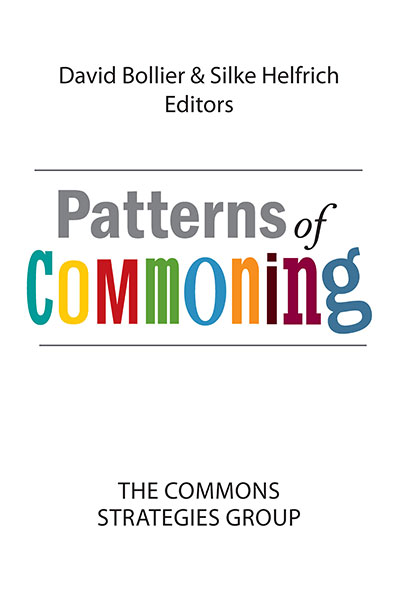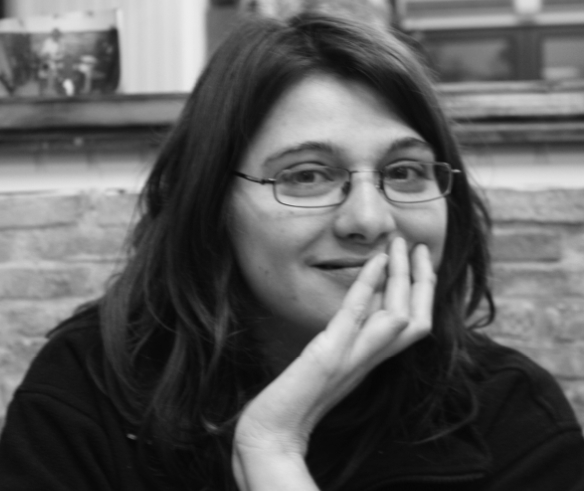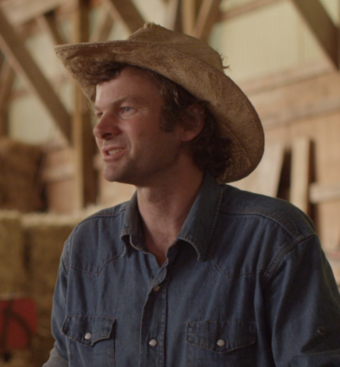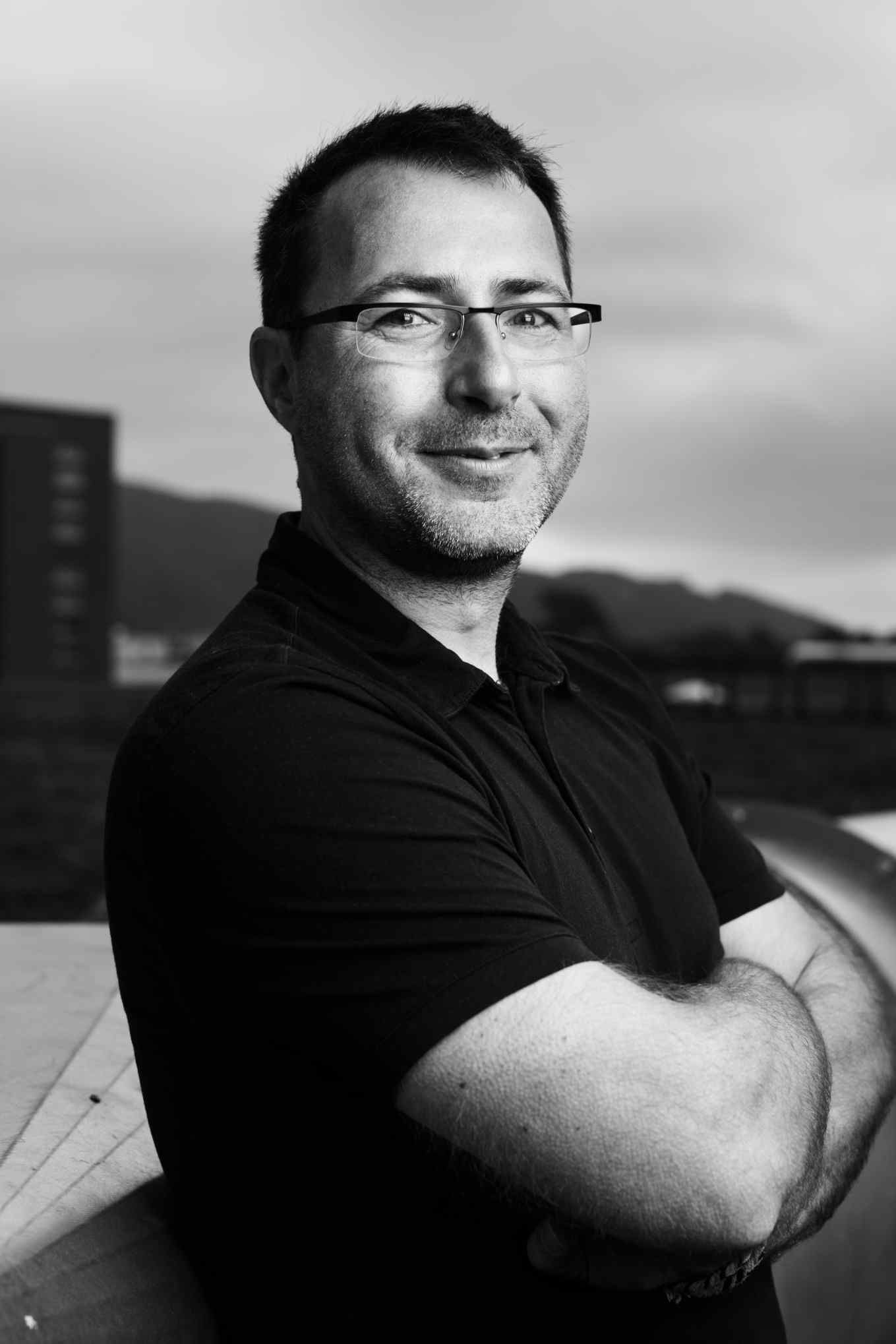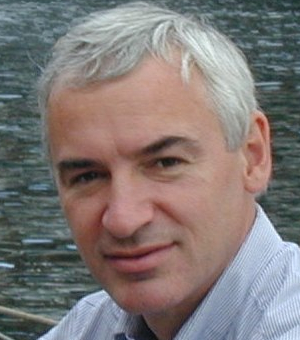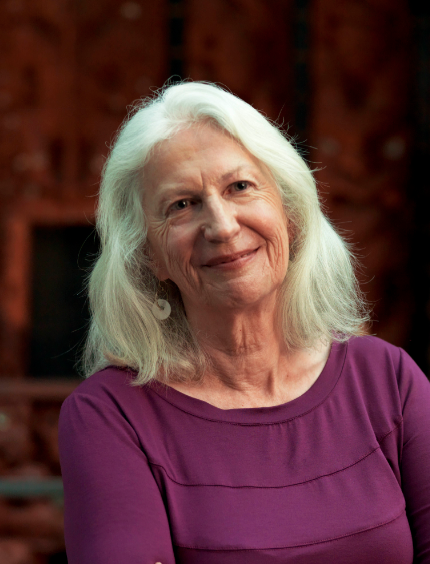Alain Ambrosi (Canada) is a designer and producer of intercultural projects, independent researcher, author, videographer and producer of the Remix The Commons Project.
Patterns of
COMMONING
Notable Commons Around the World
By Jannis Kühne
A wide variety of urban commons around the world are challenging the idea that people’s needs can only be met via city governments, urban planners and lawyers. Expertise matters, of course, but a growing number of urban commons is showing that it is not only possible but highly attractive to create commons through which citizens can actively participate in the design of their city spaces and the programs and policies that govern them. The norm in most cities is a system of rigid bureaucratic control and market-driven “service-delivery.” People are treated as impersonal units of need. In dozens of cities around the world, urban commons are showing the distinct limitations of this approach. It is entirely possible to meet people’s basic needs – for food, housing, social services and community connection – by giving them a more active, creative role and responsibility in maintaining their cities. Below are several noteworthy examples.
Bologna, Italy – City of the Commons
What would it be like if city governments, instead of relying chiefly on bureaucratic rules and programs, actually invited citizens to take their own initiatives to improve city life? That’s what the city of Bologna, Italy, is doing, and it amounts to a landmark reconceptualization of how government might work in cooperation with citizens. Ordinary people acting as commoners are invited to enter into a “co-design process” with the city to manage public spaces, urban green zones, abandoned buildings and other urban issues.
The Bologna project is the brainchild of Professor Christian Iaione of LUISS, university in Rome, in cooperation with student and faculty collaborators at LabGov, the Laboratory for the Governance of Commons. LabGov is an “inhouse clinic” and think tank that is concerned with collaborative governance, public collaborations for the commons, subsidiarity (governance at the lowest appropriate level), the sharing economy and collaborative consumption. The tagline for LabGov says it all: “Society runs, economy follows. Let’s (re)design institutions and law together.”
For years Iaione has been contemplating the idea of the “city as commons” in a number of law review articles and other essays. In 2014, the City of Bologna formally adopted legislation drafted by LabGov interns. The thirty-page Bologna Regulation for the Care and Regeneration of Urban Commons outlines a legal framework by which the city can enter into partnerships with citizens for a variety of purposes, including social services, digital innovation, urban creativity and collaborative services.1 Taken together, these collaborations comprise a new vision of the “sharing city” or commons-oriented city. To date, some ninety projects have been approved under the Bologna Regulation. Dozens of other Italian cities are emulating the Bologna initiative. The Bologna Regulation takes seriously the idea that citizens have energy, imagination and responsibility that they can apply to all sorts of municipal challenges. So why not empower such citizen action rather than stifling it under a morass of bureaucratic edicts and political battles? The conceptualization of “city as commons” represents a serious shift in thinking. Law and bureaucratic programs are not seen as the ultimate or only solution, and certainly not as solutions that are independent of the urban culture. Thinking about the city as commons requires a deeper sense of mutual engagement and obligation than “service delivery,” outsourcing and other market paradigms allow.
Instead of relying on the familiar public/private partnerships that often siphon public resources into private pockets, a city can instead pursue “public/commons partnerships” that bring people together into close, convivial and flexible collaborations. The working default is “finding a solution” rather than beggar-thy-neighbor adversarialism or fierce political warfare.
To Iaione, the Bologna Regulation offers a structure for “local authorities, citizens and the community at large to manage public and private spaces and assets together. As such, it’s a sort of handbook for civic and public collaboration, and also a new vision for government.” He believes that “we need a cultural shift in terms of how we think about government, moving away from the Leviathan State or Welfare State toward collaborative or polycentric governance.”
SSM Sozialistische Selbsthilfe Mühlheim (Socialist Self-Help Mühlheim), Germany
Sozialistische Selbsthilfe Mühlheim (SSM) is a self-organized residential and work project with a tradition and a vision. SSM evolved in the wake of a squat in an old Schnapps distillery in the Mühlheim district of Cologne. After negotiating with the city of Cologne for four years, SSM signed a rental contract for the distillery buildings. It took the legal form of a Verein, an association controlled by its members.
This arrangement has given SSM some assets that it can use to generate revenues to sustain itself as a nonprofit. It rents out one part of its hall for events, for example. And since one of SSM’s activities is liquidating households, another part of the building is used for furniture storage. The project also runs a secondhand store. The group has always taken pride in not becoming politically or financially dependent; it began without any supporting funding and is financially self-sufficient today.
Since its founding in 1979 about twenty people have been living on the SSM site. Their common space enables them to live independent lives without social isolation, and their community ethic is prized by members as a way to counter the capitalist, consumerist sensibilities of the surrounding city. SSM members seek not only to take control of their own lives, but to advance more humane, ecologically responsible urban policies. For example, SSM took a strong activist role in opposing the demolition of the Barmer Viertel neighborhood of Cologne – one of SSM’s many public-spirited initiatives that have earned it respect and admiration among city officials as well as the general population.
In light of such activism, the abbreviation SSM could reasonably stand for “self-help and solidarity come to life in Mühlheim.” The community has been providing communal housing since 1979 and creating jobs that conventional markets do not find lucrative enough to create. SSM members confidently use the term “socialist self-help” to describe their projects. SSM is a commons because it relies on self-organized governance and public-spirited action, combined with the self-reliance, sense of responsibility and ecological commitments of its members. It is a living social system that is independent and durable, and therefore able to enter into constructive engagements with both the market and state. Confirming its wide respect, SSM won the “Soziale Stadt 2012” prize (“Social City 2012”) from a business organization, the Association of German Housing and Real Estate Companies.
Garden City Letchworth, Great Britain
For most city-dwellers, one of the great challenges they face is the high cost of living and housing expenses due to investor speculation. In the early twentieth century, Ebenezer Howard tackled this problem by proposing the idea of a “garden city” that would blend the benefits of both country and city living and be financed through collective ownership of land. The central idea of Letchworth is to keep land ownership in the hands of the community while allowing housing and other buildings to be sold or leased to individuals.
Garden City Letchworth2 was started more than a century ago by ethical investors, Quakers and philanthropists and other socially concerned individuals. In 1903, founders Raymond Unwin and Barry Parker purchased 2,057 hectares of land near London at a reasonable price and then made it available to the members of the community for building. In this way, people came to own the roofs over their heads but co-owned the land on which their houses had been built. Despite low wages for many people, the community-oriented form of ownership made it possible to avoid high rents.
The collective ownership of the land also generated revenues through housing rentals and business leases. This in turn made it possible for the community to finance schools and hospitals. Everyone, not just investors, could benefit. Howard described his ideas in detail in his 1898 book Tomorrow: A Peaceful Path to Real Reform. For decades the economic value generated by Letchworth’s infrastructures – water, sewerage, gas, electricity, roads, schools, hospitals – were mutualized to benefit all of its inhabitants. This helped the city to become relatively self-sufficient. Inspired by the Letchworth example, other garden cities followed, such as the Welwyn Garden City in the 1920s.
Following World War II, the appeal of the garden city model declined. People still enjoyed living in leafy surroundings, but a more individualistic ethic replaced the idea of community in general and community ownership of land in particular. In 1995, the Garden City Corporation in Letchworth became the Garden City Letchworth Heritage Foundation, a not-for-profit organization that finances itself. The plots of the residences created in the beginning are still in the hands of the Community Land Trust (CLT). Today more than 33,000 people live in Letchworth, on land that belongs to the CLT.
In Europe and the US, there is a renewed interest in the idea of community land trusts as a way to decommodify land and mutualize the benefits of land ownership. In such discussions, Garden City Letchworth remains an inspiration and archetype. “There is indeed a wind of change now building for rethinking and updating the garden city model,” says British land trust expert and community researcher Pat Conaty.
City Repair Project, Portland, Oregon, USA
In 1996, the people who lived in Sellwood neighborhood of Portland, Oregon, decided to reclaim a street intersection, Ninth Avenue and Sherrett Street, to create “Share-It Square.” They filled it with a tea stand, a children’s playhouse and a community library. This was the beginning of an ongoing volunteer project, the City Repair Project, a self-organized urban commons designed to foster a sense of community participation and make the urbanscape more inviting and sociable.
Every May, the City Repair Project hosts a ten-day series of workshops called “Village Building Convergence” in places around Portland. The events have created dozens of projects that enliven the city through “natural buildings” and permaculture designs. Thousands of volunteers have built benches and information kiosks using “natural materials” such as sand, straw and “cob” (unburned clay masonry). The kiosks are a place for sharing neighborhood information, such as requests or offers of services (babysitting, housecleaning, massage, gardening). They are also places where people can share their homegrown vegetables.
At first, city officials resisted the idea of a neighborhood claiming a public space for itself by painting the pavement and creating small structures. But then they realized that the convivial neighborhood life at at Share-It Square was a great way for people to become more involved with city life. In 2000, the City of Portland passed an ordinance authorizing “intersection repair” throughout the city. With the help of City Repair volunteers, a neighborhood that obtains the consent of 80 percent of its residents within two blocks of an intersection, can design paintings and creative public spaces for the centers of the intersection.
Much of the inspiration for the City Repair Project has come from Mark Lakeman, the self-styled “placemaking coordinator” of the initiative. The group’s stated mission is to facilitate “artistic and ecologically oriented placemaking through projects that honor the interconnection of human communities and the natural world. We are an organized group action that educates and inspires communities and individuals to creatively transform the places where they live.”
In practice, this means everything from “intersection repairs” to public installations, block parties and conferences, and educational events and festivals. The commoning catalyzed by City Repair allows people to make decisions about their own immediate neighborhoods and to actively shape the future of the community. Sometimes that amounts to finding out the name of the neighbor who’s been living across the street for the past twenty years.
Vila Autódromo, Rio de Janeiro, Brazil
For more than thirty years, the Vila Autódromo favela community in Rio de Janeiro has been fighting the city government’s plans to evict everyone and build a new upper-middle class neighborhood. At first, the resistance came from fishers and other people with low incomes who had built their huts on the banks of Jacarepaguá Lagoon. Then, as real estate values rose in this area adjacent to the upscale neighborhood of Barra da Tijuca, developers wanted to build luxury apartments, highways or sports facilities in the Vila Autódromo.
The city government has offered a shifting set of reasons for eliminating the neighborhood – the needs of the Olympic Games in 2016, growing traffic, the environment. But the real reasons seem to be about money. As one commentator put it, “The general assumption is that skyrocketing land values have put pressure on city officials to make the space available to developers, the same interests that fund local politicians and newspapers. Yet the Brazilian constitution stipulates that those who occupy unused urban land for more than five years without contestation by land owners should be granted legal claim. And Vila Autódromo has been there since 1967.”3
Residents in Vila Autódromo are accustomed to doing things for themselves. Decades ago, they built their own houses, installing all of the electrical connections, water pipes, septic systems and telephone lines, with no government assistance. So it was not so difficult for them to form their own residential association. Their resistance helped them win formal land use rights from the government in 1994. But residents could never be sure that the government would not forcibly remove them. Many have already succumbed to the government’s strategy of paying residents large sums of money to move, leaving many parts of the neighborhood in a state of abandoned disrepair.
To propose a different vision for their neighborhood, the residents’ association came up with its own local development plan, a Plano Popular, in 2012, with the support of students and professors at state universities and the Rio de Janeiro university ETTERN.4 The grassroots proposal called for better infrastructure, restoration measures for the banks of the lagoon, and better-quality urban design for the community. In December 2013, the plan beat out 170 other applicants and received the Urban Age Award, presented annually by the London School of Economics and Deutsche Bank to creative urban initiatives.
Yet still the Vila remains under threat by a hostile city government and developers. In early 2014, construction of new housing, where the government plans to resettle the Autódromo residents, began just a kilometer away. Some residents accepted attractive cash compensation offers from the city officials, which had the effect of dividing residents and sapping energy from the protest. By January 2015, construction had begun for new buildings adjacent to the houses of residents still fighting the projects. Whether the residents will prevail in their resistance is uncertain, but they have already made one thing clear: it is best to pursue urban design with the active, collective participation of a neighborhood’s residents, in ways that meet their real interests and needs, than to sell off such “development” rights to the highest bidder.
Resident-Managed Housing, Astrachan, Russia
Following the dissolution of the Soviet Union, practically all of the state-owned housing stock in Russia was privatized in the early 1990s. While roughly 80 percent of the apartments are privately owned, managing the jointly owned stock – from the roof to the outdoor facilities – has generally remained either a responsibility of the state or has been handed over to private real estate companies. Maintenance and upkeep declined so greatly that approximately 40 percent of the apartments in Russia must now be completely refurbished. In some places the answer to the problem is being solved through self-governance by residents. This possibility arose in 2005 when the government passed a law enabling the residents to manage apartment buildings themselves or through housing cooperatives.
One early set of cooperators were residents of apartments in Astrachan, a city of 500,000 people in southern Russia. Residents of Eleventh Red Army Street in Astrachan decided to manage their apartments themselves through a council of residents known as Soyuz Zhiteley.5 The residents’ council levies a monthly charge of 8.7 rubles (roughly 17 euro cents) for every square meter of an apartment, which is then earmarked for repairs and maintenance.
Roughly one-fifth of Astrachan’s apartments, a total of 1,900 apartment buildings, are now managed by their residents. Similar initiatives exist in Moscow, St. Petersburg, Sochi and many smaller provincial cities. Management by the residents is a good alternative to the often corrupt private real estate management companies. It also helps to counter the expropriation of adjacent green spaces between the prefab apartment buildings, which developers consider suitable land for high-priced high-rises.
Not surprisingly, President Vladimir Putin’s government is opposed to resident-managed repairs and maintenance in apartment buildings. He would like to overturn the 2005 law that authorized the arrangements and housing cooperatives. If successful, residents would become individually liable for repairs and maintenance again, leading to a decline in building upkeep. The residents’ associations would also be more vulnerable to fraud and embezzlement of their contributions for repair and maintenance.
The figures show what this kind of discrimination against residents’ management means in concrete terms: in 2007, the government promised 380 billion rubles to refurbish apartment buildings. However, these monies have been granted only to buildings managed by private real estate companies or cooperatives, and not a single ruble to housing managed by the residents.

Jannis Kühne (Germany) studies urbanism at Bauhaus University in Weimar where he does research on urban commons. He has done internships in Bamako, Mali (DRCTU) and Rio de Janeiro, Brazil (NAPP) as well as a semester of study at the Federal University of Rio de Janeiro, where he worked on the issue of favela upgrading andremoção branca (the displacement of residents in pacified favela).
- https://www.comune.bologna.it/media/files/bolognaregulation.pdf
- An excellent contemporary account of Letchworth Garden City can be found in a report by Pat Conaty and Martin Large, editors, “Commons Sense: Co-operative Place Making and the Capturing of Land Value for 21st Century Garden Cities” (Co-operatives UK, 2013), available at https://www.uk.coop/commonssense.
- Aron Flasher, “Rioonwatch” [Rio Olympics Neighborhood Watch website], February 12, 2012, at https://www.rioonwatch.org/?p=2988
- https://www.ettern.ippur.ufrj.br
- Soyuz means “council.” In Astrachan, 200 organizations of residents of individual buildings are organized under the umbrella of this Russia-wide organization.
